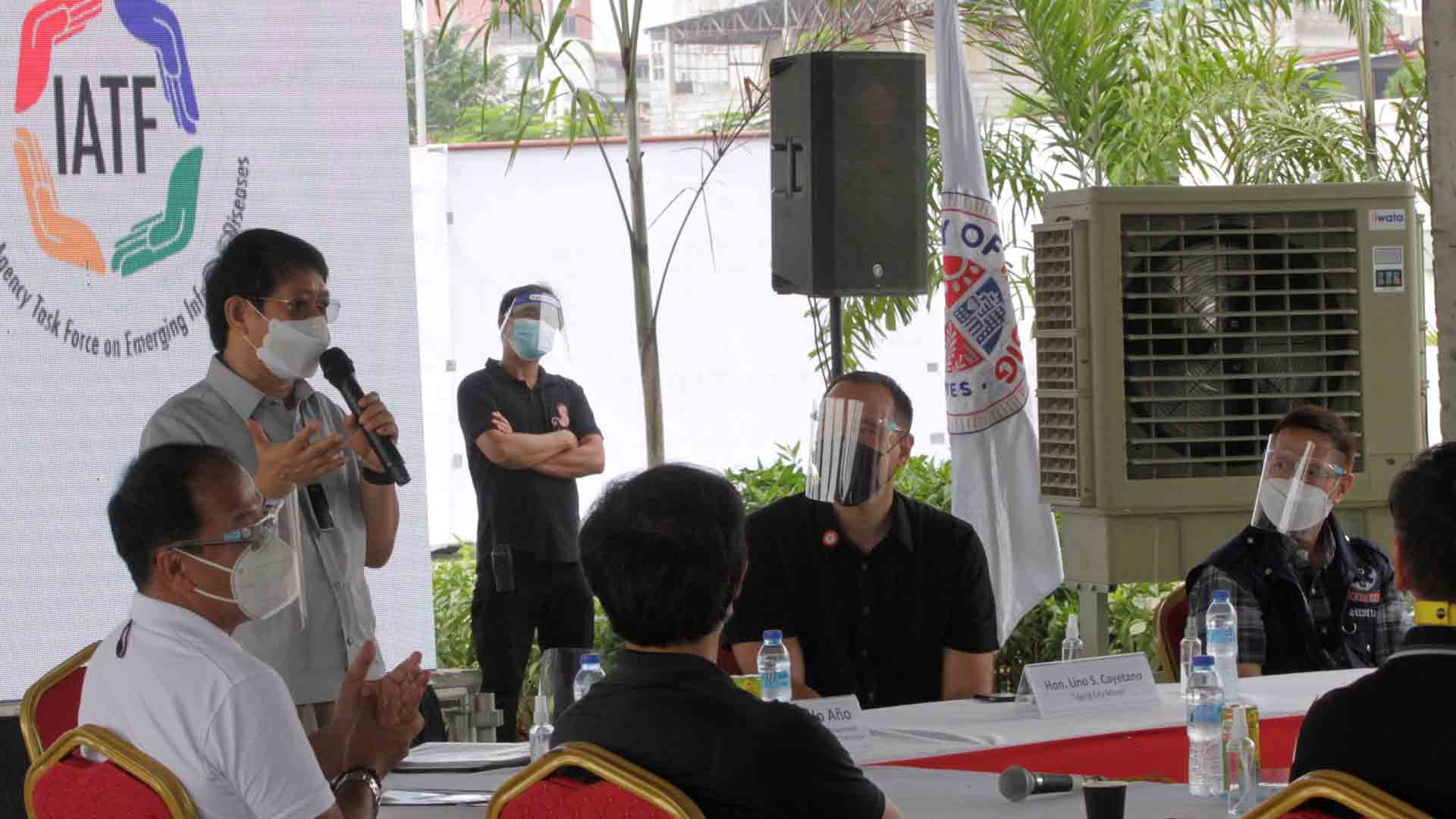Top government officials lauded the success of Taguig City in its fight against coronavirus disease 2019 (Covid-19), saying other local government units (LGU) in the country should replicate Taguig’s aggressive campaign in addressing the public health crisis.
Inter-Agency Task Force for the Management of Emerging and Infectious Diseases (IATF-EID) chairman and Health Secretary Francisco Duque III said “the collective effort of Taguig City is really inspiring and worth emulating by all the other local government units.”
“Nasasaksihan po natin ang pagiging isang modelo ng siyudad ng Taguig na tingin po namin ay dapat tularan ng iba pang pamahalaang lokal hindi lamang dito sa NCR kundi sa buong Pilipinas lalo na kung saan namamayagpag ang Covid-19 (We have witnessed Taguig as a model that we believe should be emulated by other local governments not only here in the National Capital Region but throughout the country particularly in areas where there are more Covid-19 infections),” Duque added in a press release issued on Sunday.
Duque made the announcement following the opening of the Taguig Covid megacomplex, which was designed as conducive to healing and recovery.
The sprawling complex houses a national testing facility, a molecular laboratory, and a 500-bed isolation facility.
The testing facility, which was originally located at the Enderun Colleges, was moved to the complex to centralize all Covid-19 related operations in one area.
Also housed in the megacomplex is the 500-bed isolation facility called the “Lakeshore Hotel.” Each Covid-19 patient will be isolated in an air-conditioned container house, which is equipped with a separate toilet and bath.
As of Sept. 23, Taguig remains to be the city with the lowest number of active Covid-19 cases in the NCR. It has only 389 active cases of Metro Manila’s 6,988 confirmed cases.
The city has a case fatality rate of 0.78 percent — one of the lowest attack rates in the country. The city has already tested more than 5 percent of its citizens.
Roughly 94 percent of those infected with the virus were able to reintegrate back into society.
“Pinagmamalaki natin ito (We are proud of Taguig Covid megacomplex). This is a model facility,” Duque said.
He said although not all LGUs in the country have the resources of Taguig but worth emulating is the city’s implementation of the strategies contained in the National Action Plan, particularly the aspects of prevention — strictly following the minimum health standards — contact tracing, testing, treatment, and reintegration.
Duque also emphasized the city’s sanitization is crucial why it was able to address the pandemic head on.
Department of the Interior and Local Government (DILG) Secretary Eduardo Año, who is also the vice-chair of the National Task Force Against Covid-19, said Taguig City’s Covid megacomplex is comparable to a well-equipped “processing plant.”
“Ang ginawa ng ating Mayor ay parang processing plant, na kumpleto, hanggang umuwi ang ating mga Covid patients. Mula testing, contact tracing, isolation, hanggang sa reintegration (What mayor did is like processing plant, complete, until the Covid-19 patients return home. From testing, contact tracing, isolation, up to integration),” he noted.
Año also noted that the location of the isolation facility is “very much conducive to healing and recovery” of patients.
Taguig City Mayor Lino Cayetano attributed these positive developments to the strong coordination between the national and local government, the relentless service of healthcare workers, and particularly the empowerment of barangays’ Covid response mechanisms.
“This facility is a testament of [the] good coordination between the national and local government,” Cayetano said.
Taguig City is also one of the only three cities in the NCR to have its own DOH-accredited molecular laboratory, together with Valenzuela City and Marikina City. The laboratory targets to conduct 100,000 reverse transcription polymerase chain reaction (RT-PCR) tests by the end of the year, which is equivalent to 10 percent of the local population.
The “victory” achieved by this city in its battle against the Covid-19 pandemic should also be considered a national victory, according to the National Policy Against Covid-19 Chief Implementer Secretary Carlito G. Galvez Jr.
Galvez said the city still managed to deliver a “complete local victory” despite the many challenges brought about by the pandemic.
He noted that Taguig is a major economic hub with a sizable and highly-mobile workforce and densely-populated barangays. However, the city was still able to effectively contain local transmissions.
“Maraming iba na tumutuligsa sa atin na our fight for Covid-19 is a failure. Sana tingnan nila ang Taguig (Many criticize our fight for Covid-19 is a failure). They think Taguig. This is a complete local victory that we have, that despite the challenges that you have almost 7,000, at isa kayo sa economic hub na napakahirap i-control ng movement ng different workers, at the same time may densely-populated area kayo, you were able to bring down your active cases to only 389 (and you are one of the economic hubs that are difficult to control the movement of the workers, at the same time you have densely-populated area, you were able to bring down your active cases to only 389),” he said.
Galvez stressed the importance of good leadership to effectively and efficiently manage and respond to the health crisis.
National Policy Against Covid-19 deputy chief implementer Vince Dizon praised also the city for its holistic and integrated approach in fighting the pandemic.
“Isa ang ang Taguig City sa iilang LGUs na magaling sa lahat — sa testing, tracing, isolation, treatment, at reintegration (Taguig City is one of the LGUs that has effective in testing, tracing, isolation, treatment, and reintegration),” he said.
Galvez emphasized the need for cities to have adequate local epidemiological surveillance units, contact tracing teams, healthcare and isolation facilities and establish their own molecular testing laboratories to prevent and anticipate spikes in Covid-19 cases, especially in general community quarantine (GCQ) and modified GCQ areas.
Some highly urbanized cities have seen a steep rise in coronavirus cases after shifting to MGCQ due to the lack of proactive surveillance, testing and healthcare facilities. (PNA)







